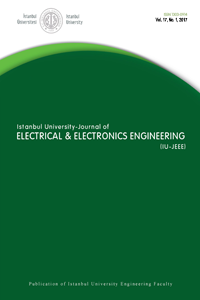Emotion Recognition via Galvanic Skin Response: Comparison of Machine Learning Algorithms and Feature Extraction Methods
Abstract
Emotions
play a significant and powerful role in everyday life of human beings.
Developing algorithms for computers to recognize emotional expression is widely
studied area. In this study, emotion recognition from Galvanic Skin Response signals was performed
using time domain, wavelet and empirical mode decomposition based features.
Valence and arousal have been categorized and relationship between physiological
signals and arousal and valence has been studied using k-Nearest Neighbors,
Decision Tree, Random Forest and Support Vector Machine algorithms. We have
achieved 81.81% and 89.29% accuracy rate for arousal and valence respectively.
Keywords
Biomedical Signal Processing Emotion Recognition Pattern Recognition Machine Learning Physiological Signal Galvanic Skin Response Decision Tree Random Forest k-Nearest Neighbors Support Vector Machine
References
- [1] N. Sebe, I.Cohen, and T. S. Huang, “Multimodal Emotion Recognition”, WSPC, June 18, 2004
- [2] P. Ekman, P., R.W.Levenson, , W.V. Friesen. Autonomic nervous system activity distinguishing among emotions. Science 221, 1208– 1210., 1983
- [3] Shimmer, “Measuring Emotion: Reactions To Media”, Dublin, Ireland, 2015
Abstract
References
- [1] N. Sebe, I.Cohen, and T. S. Huang, “Multimodal Emotion Recognition”, WSPC, June 18, 2004
- [2] P. Ekman, P., R.W.Levenson, , W.V. Friesen. Autonomic nervous system activity distinguishing among emotions. Science 221, 1208– 1210., 1983
- [3] Shimmer, “Measuring Emotion: Reactions To Media”, Dublin, Ireland, 2015
Details
| Journal Section | Articles |
|---|---|
| Authors | |
| Publication Date | March 27, 2017 |
| Published in Issue | Year 2017 Volume: 17 Issue: 1 |


